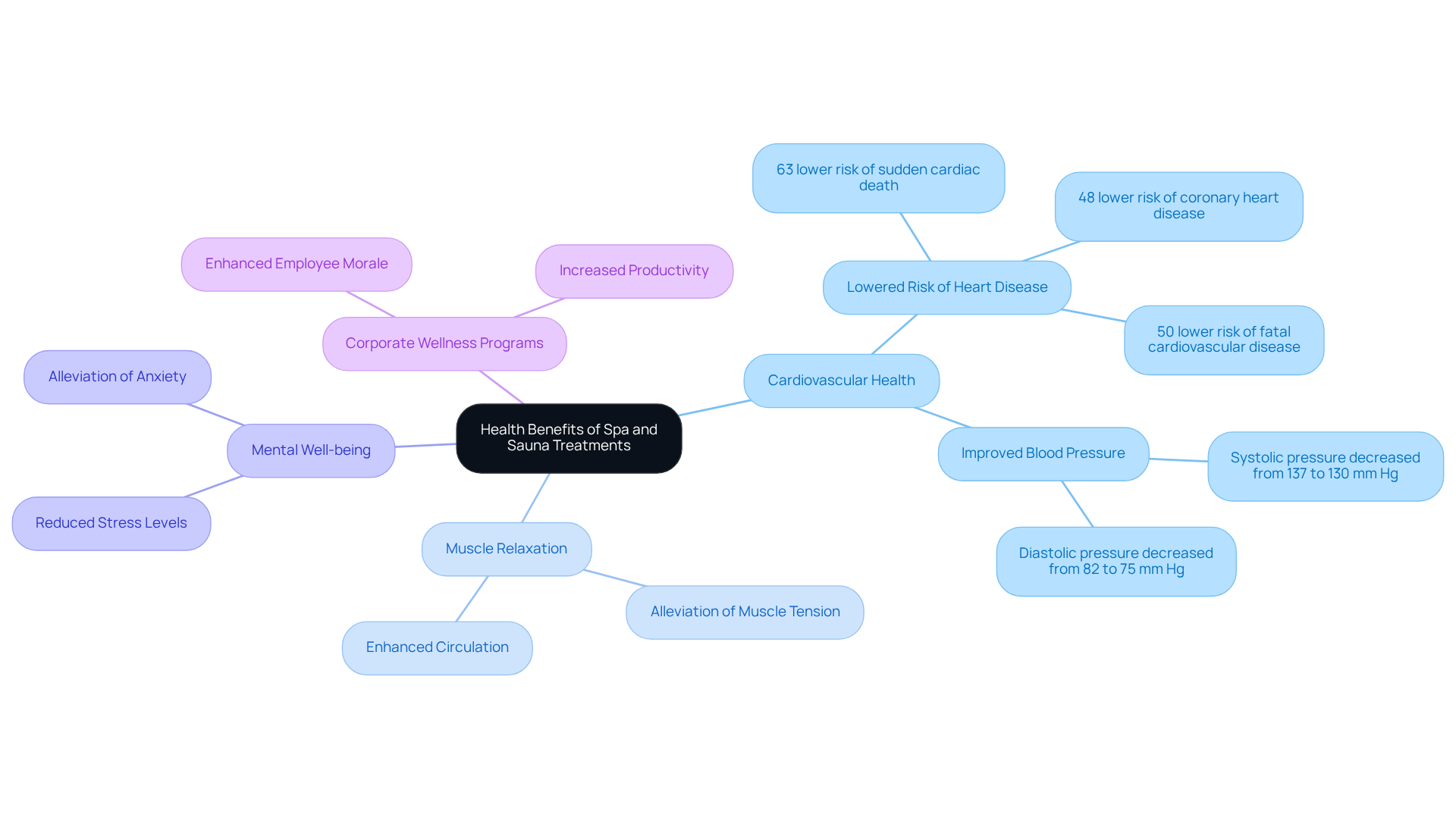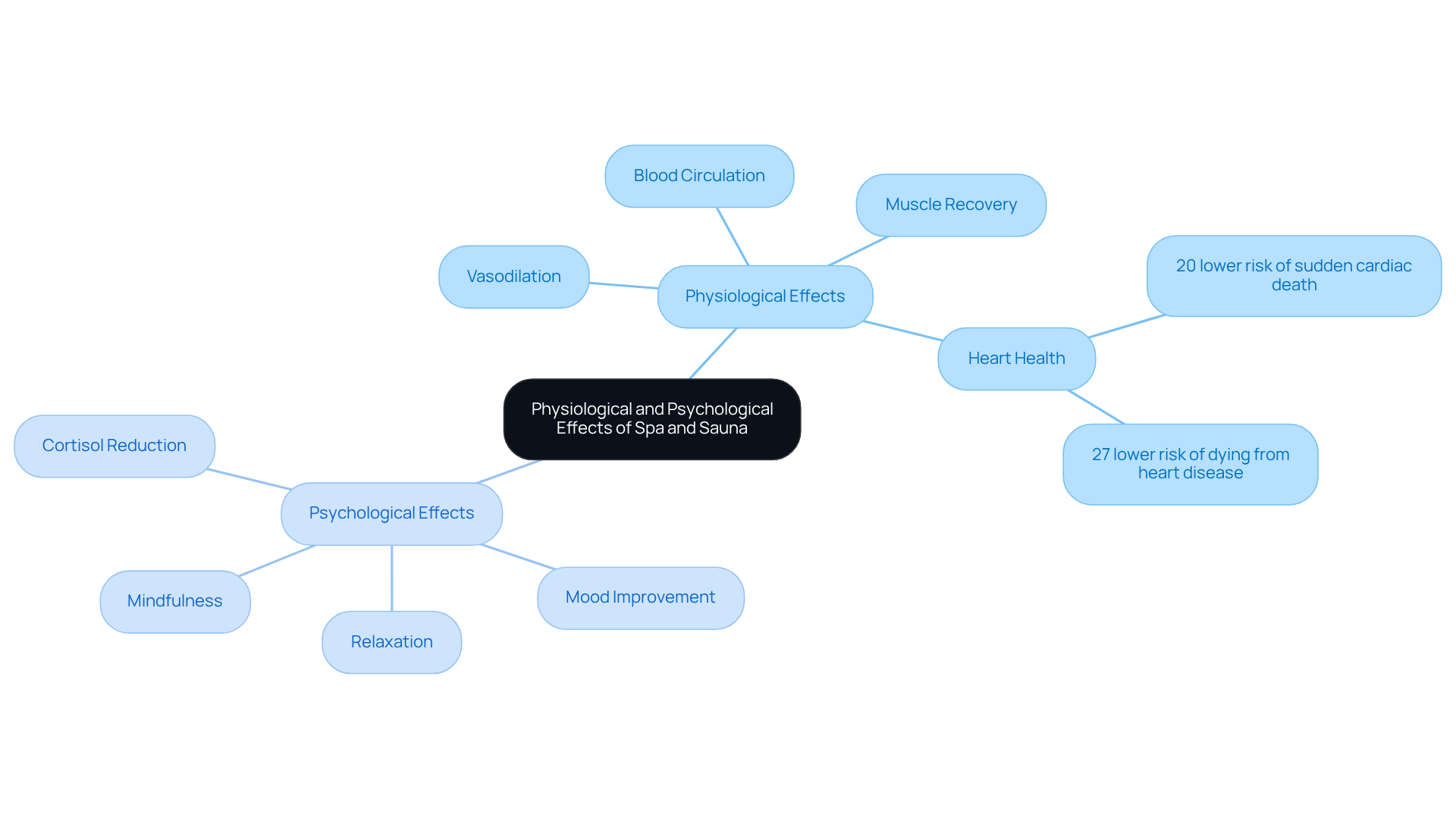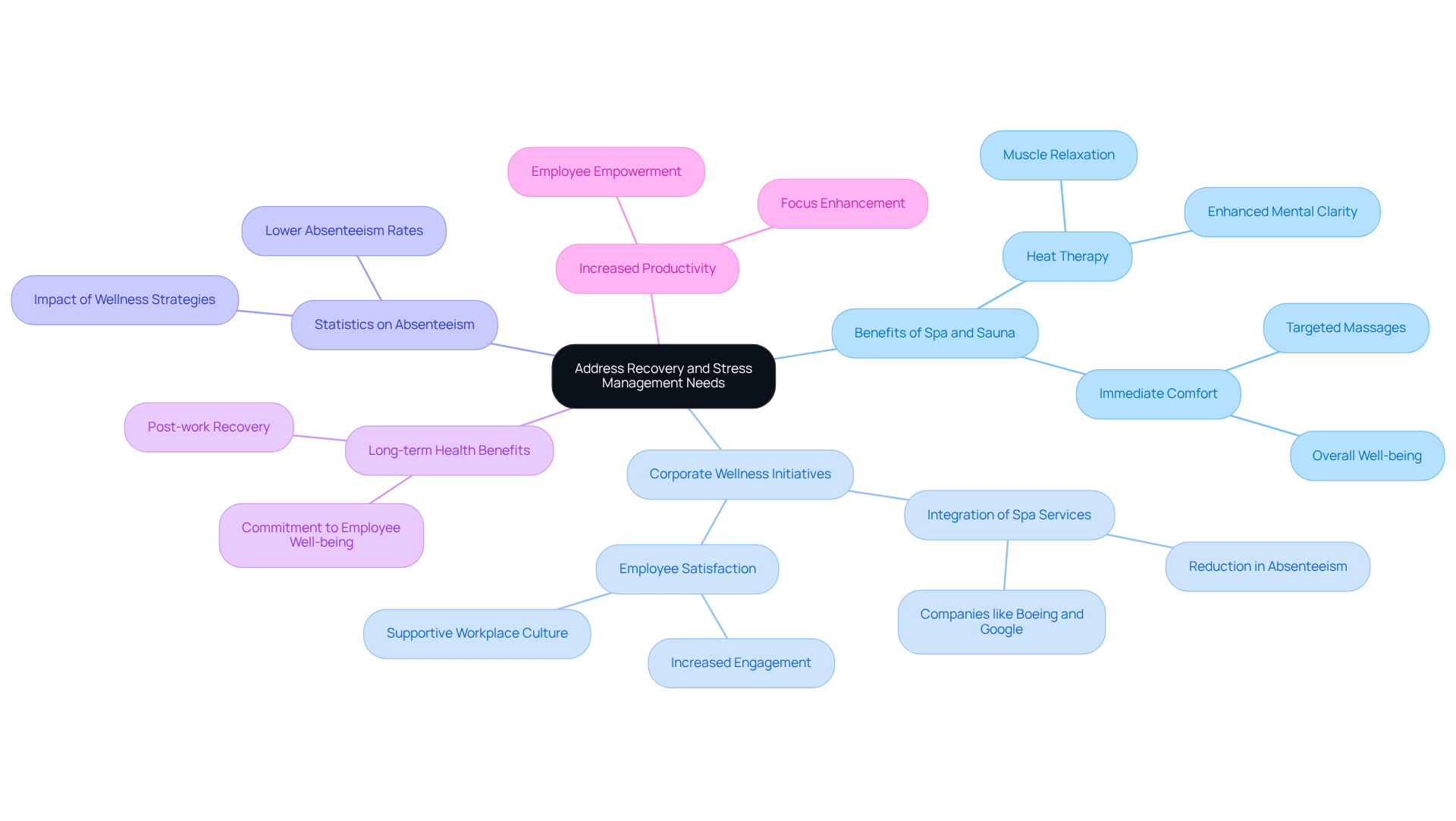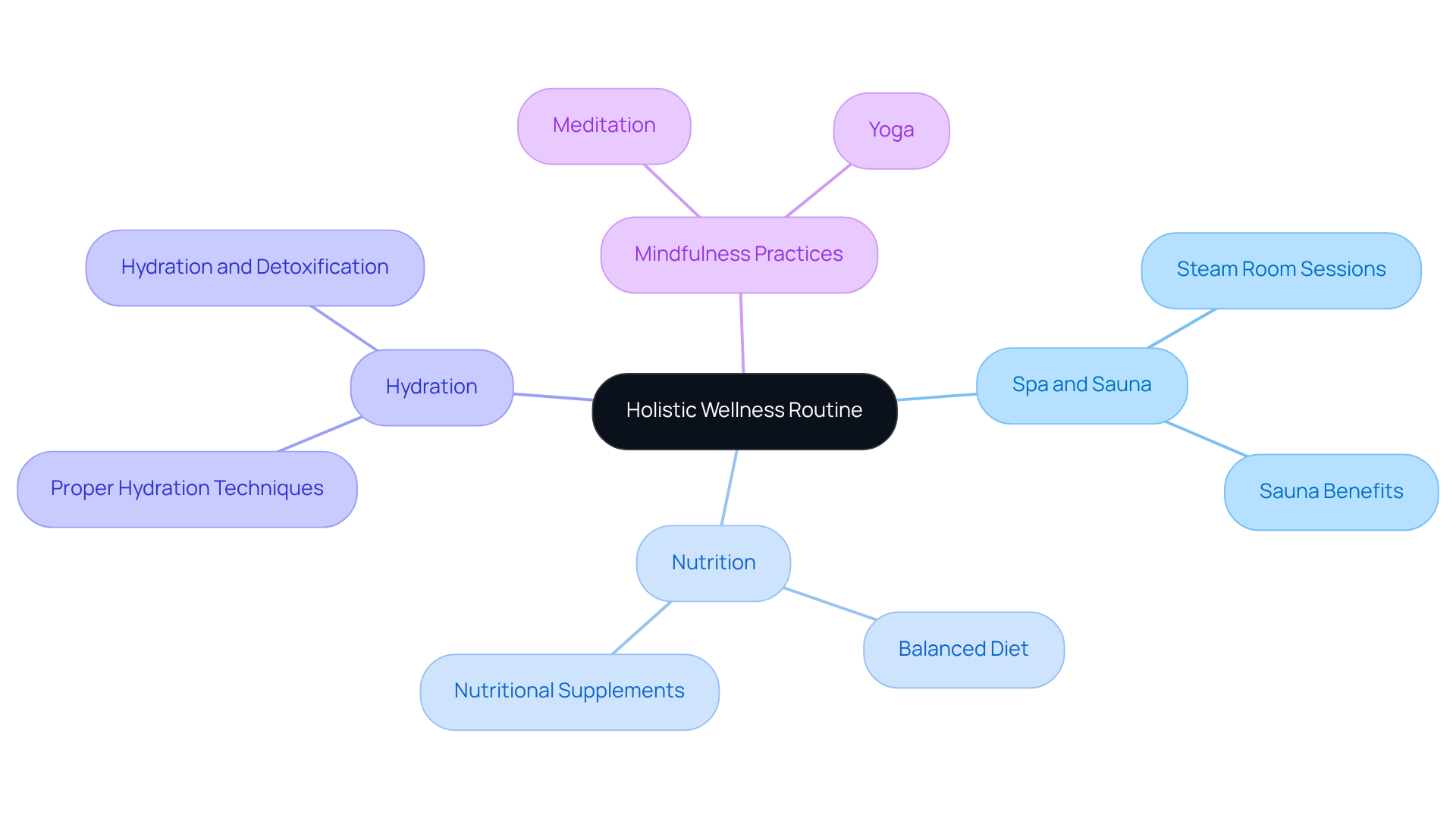Why Spa and Sauna Treatments Are Essential for Corporate Wellness

Overview
Spa and sauna treatments are indispensable for corporate wellness, as they significantly enhance both physical health and mental well-being. These treatments play a crucial role in reducing stress and boosting employee productivity. The physiological benefits are compelling, including improved cardiovascular health and effective muscle recovery. Additionally, the psychological advantages—such as diminished anxiety and heightened mental clarity—are vital in high-pressure work environments. It is imperative for corporate executives to recognize the profound impact these treatments can have on their teams' overall performance and morale.
Introduction
In the fast-paced world of corporate life, the significance of employee well-being stands at an unprecedented level. Spa and sauna treatments present a unique opportunity to bolster both physical health and mental clarity, functioning as vital tools for stress management and recovery. The pressing question is: how can organizations seamlessly integrate these wellness practices into their corporate culture to amplify productivity and enhance employee satisfaction? By prioritizing these initiatives, companies can not only improve the well-being of their workforce but also foster a more engaged and motivated environment.
Understand the Health Benefits of Spa and Sauna Treatments
Spa and sauna therapies present a multitude of wellness advantages, particularly in corporate environments. Regular use of steam baths correlates with significant improvements in cardiovascular health, including a lowered risk of heart disease and reduced blood pressure. Research indicates that individuals engaging in heat bathing four to seven times weekly experience a 63% lower risk of sudden cardiac death and a 50% reduced risk of fatal cardiovascular disease. Consequently, sauna use emerges as a vital strategy for promoting employee health.
Moreover, spa services such as massages and hydrotherapy play a crucial role in alleviating muscle tension, enhancing circulation, and fostering relaxation. These benefits are indispensable in linked to high-pressure work environments. Beyond physical recovery, these therapies also contribute to improved mental well-being by effectively reducing stress and anxiety levels, thereby nurturing a healthier workplace culture.
Integrating spa and sauna services into corporate wellness programs not only enhances physical health but also elevates overall employee morale and productivity. This approach cultivates a more dynamic and engaged workforce, ultimately driving organizational success.

Explore the Physiological and Psychological Effects
The physiological impacts of spa and sauna treatments are profound, particularly in promoting vasodilation, which enhances blood circulation and aids muscle recovery. This is especially advantageous for employees involved in physical activities or those who experience muscle strain due to prolonged sitting. Psychologically, these treatments effectively lower cortisol levels, the hormone associated with stress. Regular engagement in heat therapy is linked to improved mood and mental clarity, as heat exposure stimulates the release of endorphins—natural mood enhancers. Moreover, the tranquil environment of a spa and sauna cultivates mindfulness and relaxation, enabling employees to recharge both mentally and emotionally.
Research indicates that individuals utilizing steam rooms in spa and sauna facilities two to three times weekly are:
- 20% less likely to experience sudden cardiac death
- 27% lower risk of dying from heart disease
This underscores the long-term benefits of consistent spa visits. As Francis Bacon wisely stated, 'A spa day for your body is balm for your soul,' emphasizing the crucial role of self-care in sustaining overall well-being.
In addition to steam treatments, Tsavo Wellness offers mild hyperbaric oxygen therapy in the AirPod, operating at an atmospheric pressure of 1.3 ATA. This therapy significantly enhances overall wellness by:
- Increasing the vital oxygen supply to cells and tissues
- Promoting faster recovery
- Reducing inflammation
- Boosting energy levels
Regular sessions can alleviate fatigue and strengthen the immune system, making it an excellent complement to heat therapy. Notably, a 60-minute session in the AirPod provides benefits comparable to consuming 60 liters of hydrogen-infused water, delivering swift and effective health improvements. While in the chamber, clients can unwind, listen to music, meditate, or utilize their devices, . It is crucial for steam room users to stay hydrated before and after sessions to maximize benefits and ensure safety.

Address Recovery and Stress Management Needs
In the demanding landscape of corporate life, effective stress management is paramount. Treatments in the emerge as vital resources for recovery and relaxation. After a demanding week, employees can significantly benefit from heat therapy sessions that not only relax muscles but also enhance mental clarity. Research indicates that regular use of the spa and sauna can improve recovery, leading to heightened focus and productivity at work. Additionally, targeted services at the spa and sauna, such as massages, alleviate specific tension areas, providing immediate comfort and fostering a sense of overall well-being.
Firms like Boeing and Google have successfully integrated spa and sauna services into their corporate wellness initiatives, resulting in notable decreases in absenteeism. These initiatives not only enhance employee satisfaction but also cultivate a supportive workplace culture that prioritizes health. Statistics reveal that organizations implementing wellness strategies, including spa and sauna treatments, experience lower absenteeism rates and increased employee engagement. By providing regular access to these rejuvenating therapies, companies empower their workforce to manage stress effectively, ultimately fostering a more productive and committed team.
Moreover, heat therapy sessions play a crucial role in post-work recovery, enabling employees to recharge and reset. The incorporation of these wellness practices into corporate environments addresses immediate recovery needs while promoting long-term health benefits, reinforcing the organization's commitment to employee well-being. Thus, spa and sauna services are not mere indulgences; they are essential components of a holistic wellness plan for corporate well-being.

Integrate Spa and Sauna into Your Holistic Wellness Routine
Integrating spa and sauna experiences into a holistic wellness regimen is not merely beneficial; it is essential for maximizing health outcomes. Employees must recognize these practices as vital components of their health strategy, rather than mere indulgences.
For instance, the combination of steam room sessions with proper hydration and balanced nutrition can significantly bolster detoxification processes and enhance overall well-being. Moreover, incorporating mindfulness practices—such as meditation or yoga—before or after spa treatments can profoundly deepen relaxation and sharpen mental clarity.
Organizations have the opportunity to champion this holistic approach by hosting wellness workshops that not only educate employees on the importance of self-care but also guide them in crafting personalized wellness routines that prioritize regular spa and sauna use. This proactive strategy not only nurtures individual health but also cultivates a more .

Conclusion
Incorporating spa and sauna treatments into corporate wellness initiatives is not merely a luxury; it represents a crucial investment in employee health and productivity. These therapies offer substantial physical and mental health benefits, fostering a workplace culture that prioritizes well-being. By promoting cardiovascular health, alleviating stress, and enhancing recovery, spa and sauna experiences become essential components of a holistic wellness approach for organizations.
The extensive advantages of integrating these treatments into corporate wellness programs cannot be overstated. Regular use of spa and sauna facilities leads to improved cardiovascular health, reduced stress levels, and enhanced employee morale. Companies that have successfully implemented such initiatives report lower absenteeism rates and increased engagement, underscoring the tangible impact of prioritizing employee wellness.
Embracing spa and sauna therapies within a corporate wellness framework not only supports individual health but also cultivates a more vibrant and productive workplace environment. Organizations are urged to champion these practices, educating employees on their benefits and encouraging regular participation. By doing so, companies can foster a culture of self-care that empowers employees to manage stress effectively, ultimately resulting in a healthier, more engaged workforce.
Frequently Asked Questions
What are the health benefits of spa and sauna treatments?
Spa and sauna treatments offer numerous health benefits, including improved cardiovascular health, reduced risk of heart disease, lower blood pressure, alleviation of muscle tension, enhanced circulation, and stress reduction.
How does regular sauna use impact cardiovascular health?
Regular sauna use, particularly four to seven times weekly, is associated with a 63% lower risk of sudden cardiac death and a 50% reduced risk of fatal cardiovascular disease.
What role do spa services like massages and hydrotherapy play in wellness?
Spa services such as massages and hydrotherapy help alleviate muscle tension, enhance circulation, and promote relaxation, which are essential for countering the physical strains of high-pressure work environments.
How do spa and sauna treatments affect mental well-being?
These therapies contribute to improved mental well-being by effectively reducing stress and anxiety levels, fostering a healthier workplace culture.
Why should companies integrate spa and sauna services into their wellness programs?
Integrating spa and sauna services into corporate wellness programs enhances physical health, boosts employee morale, and increases productivity, leading to a more dynamic and engaged workforce and driving organizational success.


